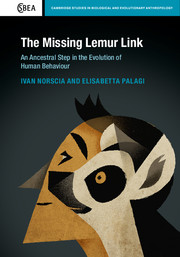Book contents
- Frontmatter
- Dedication
- Contents
- List of contributors
- A message from Jane Goodall
- Foreword
- Preface by the authors
- Acknowledgements
- Part I Communication: from sociality to society
- 1 Who are you? How lemurs recognise each other in a smell-centred world
- 2 What do you mean? Multimodal communication for a better signal transmission
- 3 A vertical living: sexual selection strategies and upright locomotion
- Part II How conflicts shape societies
- Part III Why lemurs keep in touch
- Part IV Closing remarks
- Looking back to the future – Michael Huffman
- Index
- References
2 - What do you mean? Multimodal communication for a better signal transmission
from Part I - Communication: from sociality to society
Published online by Cambridge University Press: 05 May 2016
- Frontmatter
- Dedication
- Contents
- List of contributors
- A message from Jane Goodall
- Foreword
- Preface by the authors
- Acknowledgements
- Part I Communication: from sociality to society
- 1 Who are you? How lemurs recognise each other in a smell-centred world
- 2 What do you mean? Multimodal communication for a better signal transmission
- 3 A vertical living: sexual selection strategies and upright locomotion
- Part II How conflicts shape societies
- Part III Why lemurs keep in touch
- Part IV Closing remarks
- Looking back to the future – Michael Huffman
- Index
- References
Summary
Surrounding things transmit their images to the senses and the senses transfer them to the Sensation. Sensation sends them to the Common Sense, and by it they are stamped upon the memory and are there more or less retained according to the importance or force of the impression.
Leonardo Da Vinci, ca. 1510What is multimodal communication?
The American journalist Sydney Harris briefly and effectively tagged the difference between information and communication. According to common definitions, information refers to facts about a situation, an individual or an event. Communication is ‘the process of sharing information, especially when this increases understanding between people or groups’ (Cambridge Dictionary) or ‘the imparting or exchanging of information by speaking, writing, or using some other medium’ (Oxford Dictionary). These definitions are centred on human communication when, in fact, communication is a widespread – and necessary – phenomenon spanning the whole animal kingdom. The light pulses of fireflies (Bradbury and Vehrencamp, 1998), the dance of honeybees (von Frisch, 1967; Seeley, 1997), the claw-waving displays of crustaceans (Dingle, 1969), the songs of birds (Vehrencamp, 2000), the alarm calls of different primates (Cheney and Seyfarth, 1990), and the articulate language of humans (Savage-Rumbaugh et al., 1998) are just some examples of information transmission between or among conspecifics.
Communication is an essential prerequisite for sociality and has evolved along with the development of social systems, from the simplest to the most complex (Freeberg et al., 2012). Communication involves the transmission of a signal, which is any action or trait produced by one animal, the sender, that provides information used by another animal, the receiver (Wilson, 1975; Endler, 1993; Hebets and Papaj, 2005). A signal is complex if it can be disassembled into different, single components, each of them able to elicit a response in the receiver. Such a response, of course, can be different from the response elicited by the complex signal. For example, when the telephone rings we stop doing what we are doing to answer. So, the ring has elicited a response in the receiver (us). Once we have picked up the phone, we can just hear a beep sequence if the signal is lost or we can hear the voice of a friend and start a conversation.
- Type
- Chapter
- Information
- The Missing Lemur LinkAn Ancestral Step in the Evolution of Human Behaviour, pp. 30 - 53Publisher: Cambridge University PressPrint publication year: 2016

